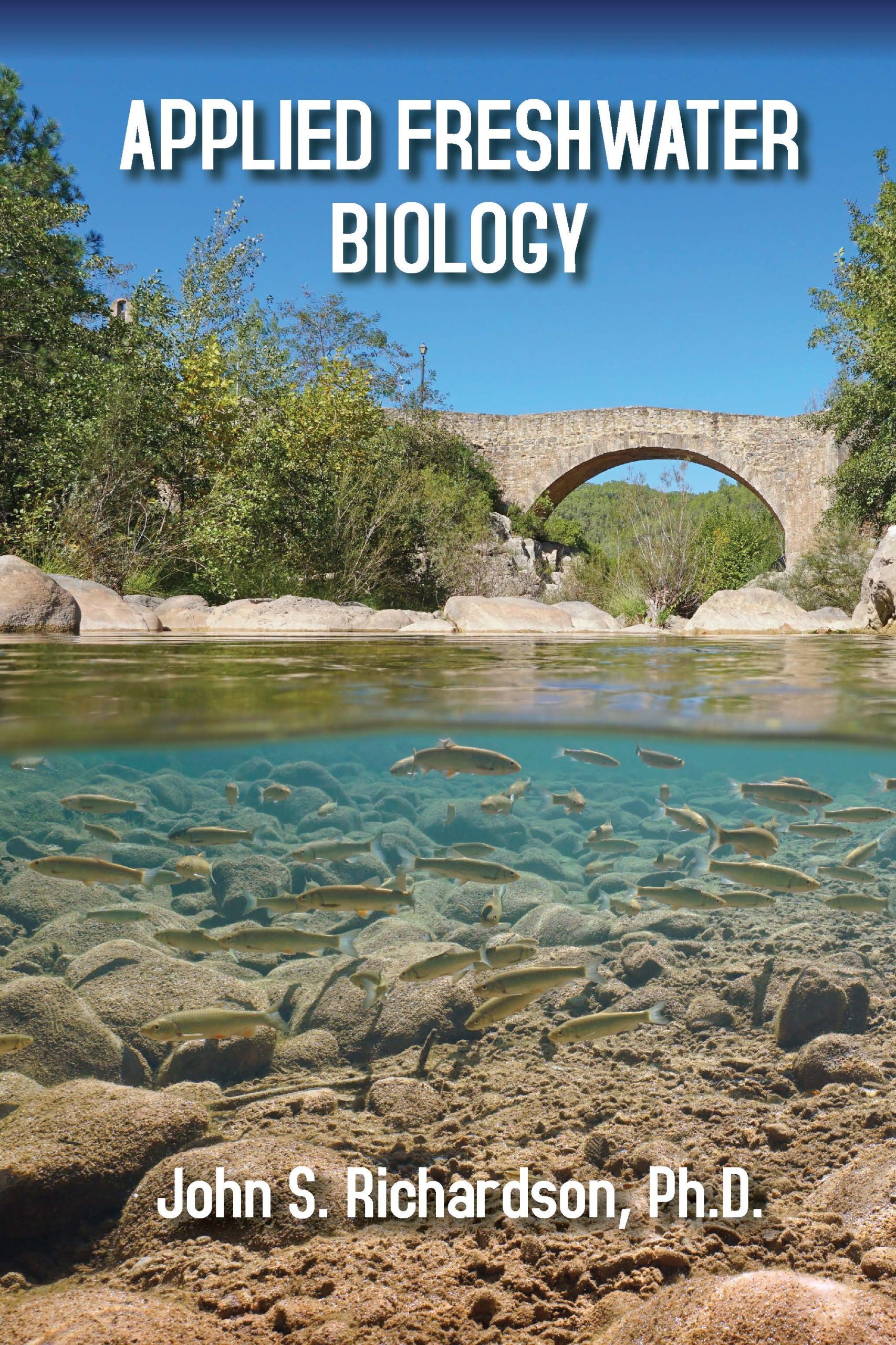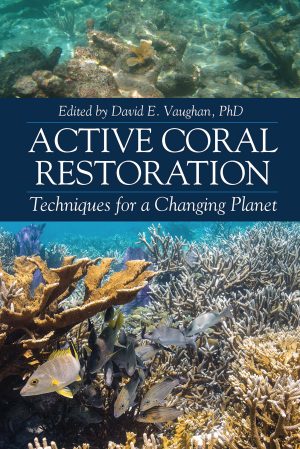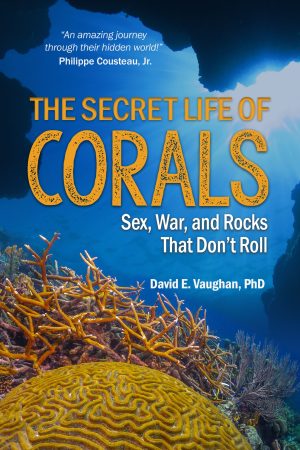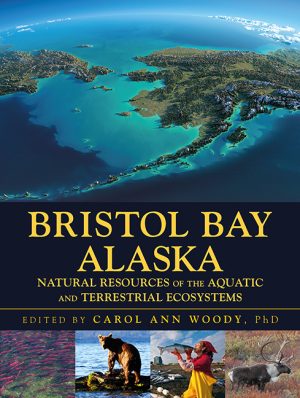Applied Freshwater Biology
$69.95
By John S. Richardson, Ph.D.
Hardcover, 7×10, 350 pages
ISBN: 978-1-60427-169-0
e-ISBN: 978-1-60427-857-6
May 2024
Description
Through rivers, wetlands, streams, and lakes, the flow of water sustains life. In addition to the myriad lifeforms that freshwater ecosystems support, including our own, they also provide opportunities for recreation and personal reflection. Unfortunately, our freshwaters have become seriously impacted and degraded by various stressors, including pollution, forestry, agriculture, urbanization, exploitation of species, and more.
In this comprehensive book, Richardson lays out the origins and nature of the most prominent environmental stressors to freshwater systems. The first two chapters provide a review of freshwater biology and hydrology. Each of the next 12 chapters focuses on a particular class of stressors, interactions they may have with other stressors, and a range of solutions currently available to mitigate the problems they cause. The last two chapters pull together key concepts to focus on the restoration of freshwater ecosystems and the importance of long-term monitoring.
This work is ideally suited for students in upper and graduate-level college courses focused on freshwater ecology, biology, environmental sciences, and environmental engineering, as well as practitioners in these respective fields. Today, more than ever, we need trained individuals who understand how to protect and restore freshwater ecosystems for both human and non-human use, and this book provides the essential information required to get there.
Key Features
- Provides 28 case studies demonstrating scientific applications for the mitigation of stressors/impacts on aquatic ecosystems and nearly 100 color illustrations and charts
- Delves into impacts from both point source and non-point source pollution
- Addresses issues with water withdrawals and transfers, as well as flow management and channelization
- Discusses solutions to problems resulting from erosion and sediment transport
- Designed for use as a one-term college course, with each chapter covering two class periods
- Chapters include thought-provoking homework activities for students
- Includes comprehensive references for additional reading and research
- WAV features selected graphs, tables, and images from the book—available from the Web Added Value™ Download Resource Center at www.jrosspub.com/wav
About the author(s)
John S. Richardson was born and raised in Toronto, Canada, and earned his first degree from the University of Toronto (B.Sc. 1979). From there, his academic career took him west as he earned degrees from the University of Alberta (M.Sc. 1983) and the University of British Columbia (Ph.D. 1989). Dr. Richardson spent three years at Simon Fraser University as a post-doctoral fellow before landing a faculty position at the University of British Columbia.
Dr. Richardson has held many professional roles including faculty member, Head of Department, member of the Peter Wall Institute for Advanced Studies, and a member of the editorial boards of several high-ranking journals. He has also been on many panels dealing with endangered species, riparian regulations, and other applications of his research.
John’s research has focused on freshwater and riparian area ecology, primarily as a population, community, and ecosystem ecologist. He has successfully mentored many excellent graduate students and post-doctoral fellows and enjoys working in a global community of scholars with many outstanding colleagues.
Table of Contents
INTRODUCTION
CHAPTER 1 – HYDROLOGY AND FRESHWATER BIOLOGY
Hydrology
Important Parameters of Water Quality
Water Temperature – The “Master Variable”
The Force of Flow
Oxygen Content
Nutrients
Acidity
Turbidity
Light
Biology of Freshwater Organisms
Micro-Organisms
Algae and Plants
Animals
Food Resources
Food Webs
Community Ecology
Ecosystem Processes
CHAPTER 2 – FRESHWATER ECOSYSTEMS: HABITAT TYPES AND GEOGRAPHIC VARIATION
Introduction
Types of Freshwater Ecosystems
Streams
Classification of Streams
Lakes
Wetlands
Estuaries
Other Freshwaters
Discontinuities
Substrate
CHAPTER 3 – SEDIMENT
Introduction
Sediments as Habitat
Impacts
Turbidity
Smothering, Abrasion, and Suffocation
Food-Web Effects
Interactions with Other Stressors
Solutions
Limiting Erosion of Sediments
Protecting Infrastructure and Reducing Bank Erosion
Too Little Sediment
Perspectives
Activities
CHAPTER 4 – NONPOINT SOURCE POLLUTION
Introduction
Impacts
Eutrophication
Toxic Metals and Synthetic Chemicals
Genetic Alterations
Hormone Disruption and Other Effects
Radiation Exposure
Interactions with Other Stressors
Solutions
The Field of Ecotoxicology
Controlling or Removing Nutrients
Controls on Pesticides
Regulation of Effluents
Reduce Use of Plastics
Perspectives
CHAPTER 5 – POINT SOURCE POLLUTION
Introduction
Impacts
Domestic Water Supplies and Wastewater Treatment Plants
Livestock
Electric Plants
Landfills
Mining
Interactions with Other Stressors
Solutions
Municipal Wastewater Treatment Plants and Stormwater
Industrial Treatment
Livestock
Landfills
Mining
Monitoring
Perspectives
Activities
CHAPTER 6 – WATER WITHDRAWALS AND TRANSFERS
Introduction
Impacts
Interactions with Other Stressors
Solutions
Governance, Management, and the Surface-to-Ground Water Connection
Irrigation
Water Supply Costs
Perspectives
Activities
CHAPTER 7 – FLOW MANAGEMENT AND CHANNELIZATION
Introduction
Impacts
Dams and Reservoirs
Channelization and Diking
Interactions with Other Stressors
Solutions
Environmental Flows
Connecting Habitat
Restoration of Habitats Downstream of Dams
Removal of Dams
Flow Management for Environmental Restoration
Monitoring
Perspectives
Activities
CHAPTER 8 – FOREST AND AGRICULTURE MANAGEMENT
Introduction
Impacts
Hydrological Impacts
Shade Removal
Sediments and Organic Matter Inputs
Large Wood and Shoreline Vegetation
Nutrients and Pesticides
Interactions with Other Stressors
Solutions
Pesticide Exclusion Zones
Silt Fences and Landscape Cloths
Riparian Areas and Buffers
Forestry
Crop Agriculture
Livestock Management
Perspectives
Activities
CHAPTER 9 – URBAN WATERBODIES
Introduction
Impacts
Urban Stream Syndrome
Water Quality Changes
Overflows from Combined Sewer Systems
Channelization
Lakes and Wetlands
Ecological Traps
Interactions with Other Stressors
Solutions
Functional Waterbodies
Making Urban Streams and their Floodplains More Natural
Increase Urban Green Spaces and Vegetation
Protecting Water Quality
Maintain Urban Wetlands and Lakes
Incorporate Constructed Wetlands and Other Green Infrastructure
Increase Connectivity and Reduce Ecological Traps
Public Participation
Perspectives
Activities
CHAPTER 10 – EXPLOITATION OF SPECIES
Introduction
Impacts
Reduction in Wild Numbers
Aquaculture
Rice Production
Interactions with Other Stressors
Disruption of Wild Freshwater Ecosystems
Unintended Consequences of Rice and Other Crops
Solutions
Fishery Population Management
Avoid Inadvertent Introductions of Nonindigenous Species
Exploitation of Species Other than Fish
Hatcheries
Aquaculture
Rice Production
Perspectives
Activities
CHAPTER 11 – INVASIVE SPECIES
Introduction
Impacts
Predation, Competition, and the Disruption of Food Webs
Damage to Infrastructure
Environmental Changes that Alter Behavior
Spreading of Disease
Interactions with Other Stressors
Solutions
Policy and Public Awareness
Physical Removal
Biological Control and Poison
Barriers
Activities
CHAPTER 12 – ENDANGERED SPECIES
Introduction
Impacts
Interactions with Other Stressors
Solutions
Laws, Rules, and Agreements
Number of Occurrences
Habitat Protection and Connectivity
Captive Breeding, Headstarting, and Reintroductions
Activities
CHAPTER 13 – MULTIPLE STRESSORS AND CUMULATIVE EFFECTS
Introduction
Impacts
Interactions with Other Stressors
Solutions
Better Statistical Models and Experimental Tests
Advances in Ecotoxicology for Multiple Stressors
Bioaccumulation and Biomagnification
Perspectives
Activities
CHAPTER 14 – CLIMATE CHANGE AND CLIMATE PROOFING
Introduction
Impacts
Extreme Weather Events
Quantity and Quality of Water
Thermal Stress on Organisms
Potential Return of Acid Rain
Interactions with Other Stressors
Solutions
Water Storage Strategies
Limiting Increases in Water Temperatures and Evaporation Rates
Defenses against Extreme Weather
Novel Ideas
Perspectives
Activities
CHAPTER 15 – RESTORATION
Introduction
Impacts
Interactions with Other Stressors
Solutions
Stewardship
Riparian Zone Restoration
Stream and River Restoration
Restoration of Wetlands
Restoration of Lakes
Adding Nutrients
Replacement, Conservation Offsets, and Mitigation Banking
Perspectives
Activities
CHAPTER 16 – MONITORING
Introduction
Limitations
Solutions
Physical and Chemical Measures
Biomonitoring for Chemicals
Biological Measures
Biomonitoring Based on Communities or Indicators
Genetics and Genomics
Decision Support Tools
Perspectives
Activities
REFERENCES
INDEX
Reviews
“This book is exceptional in that it represents the perfect balance of fundamental knowledge about aquatic ecosystems as well as lucid examples of how that knowledge can be applied to solve complex problems, including those that can transcend scale—from single populations to watershed processes that connect land and water over vast landscapes.”
—Steven J. Cooke, Professor, Carleton University, Ottawa, Canada
“Great book for teaching and training. Unique in my view with a strong applied focus.”
—Margaret A. Palmer, Distinguished University Professor, University of Maryland, and Director of the National Socio-Environmental Synthesis Center
“This book is perfectly timed to be an invaluable resource for students in upper-level and graduate classes. Moreover, it will be a major information source for freshwater managers, government agencies, and conservationists. Each chapter addresses pivotal environmental issues affecting freshwater ecosystems and includes a solution-based approach for advancing conservation and mitigation strategies.”
—Klement Tockner, Ph.D., Director General of the Senckenberg Society for Natural Research, Frankfurt, Germany
“For factors ranging from sediment loading to polluting solutes and microplastics, water diversions, impoundments and withdrawals, and finally, invasions by exotic species, Richardson vividly describes consequences to freshwater life but then presents case studies of rehabilitation and management efforts that are helping restore more natural regimes.”
—Mary E. Power, Professor, University of California, Berkley
You may also like…
Related products
-
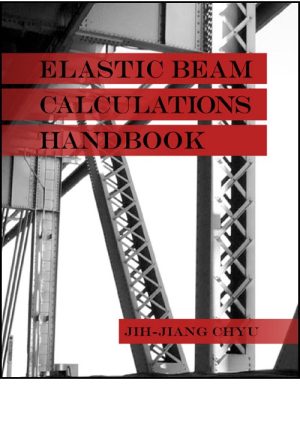
Elastic Beam Calculations Handbook
Retail Price: $119.95$99.95 Add to cart -
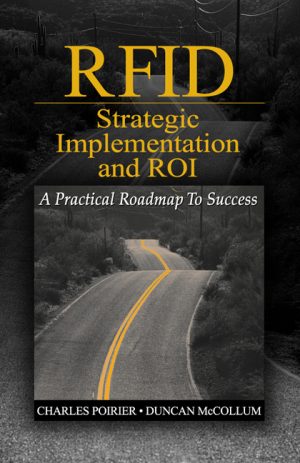
RFID Strategic Implementation and ROI
Retail Price: $49.95$44.95 Add to cart -
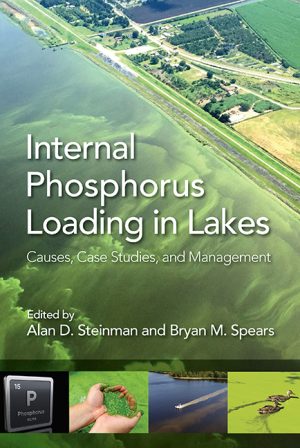
Internal Phosphorus Loading in Lakes
Retail Price: $109.95$89.95 Add to cart -

Worship Space Acoustics
Retail Price: $89.95$79.95 Add to cart -

Acoustics and Audio Technology, Third Edition
Retail Price: $69.95$59.95 Add to cart

